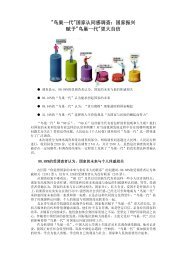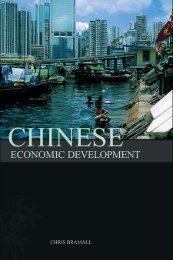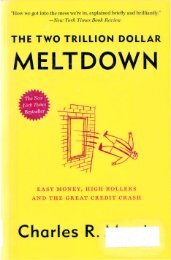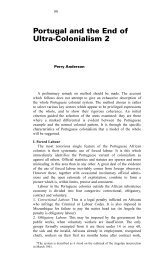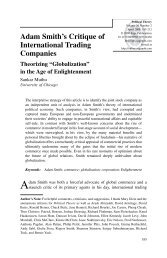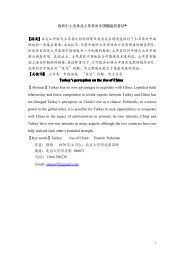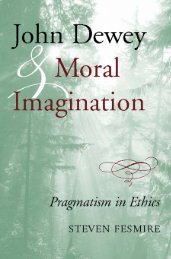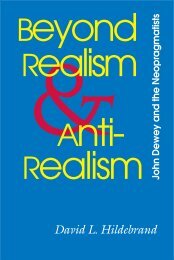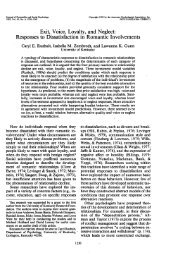Battle for China's Past : Mao and the Cultural Revolution
Battle for China's Past : Mao and the Cultural Revolution
Battle for China's Past : Mao and the Cultural Revolution
You also want an ePaper? Increase the reach of your titles
YUMPU automatically turns print PDFs into web optimized ePapers that Google loves.
INTRODUCTION<br />
Chapter 1 opens with a debate on <strong>the</strong> <strong>Cultural</strong> <strong>Revolution</strong> <strong>and</strong> asks<br />
whe<strong>the</strong>r it was ten years of catastrophe (shi nian haojie), who were ‘<strong>the</strong><br />
Chinese’ who were adversely affected by it, what were <strong>the</strong> causes of <strong>the</strong><br />
violence, <strong>and</strong> what was <strong>the</strong> extent of violence, whe<strong>the</strong>r <strong>the</strong>re were<br />
constructive achievements during <strong>the</strong> <strong>Cultural</strong> <strong>Revolution</strong> <strong>and</strong> if so what<br />
were <strong>the</strong>y, <strong>and</strong> what was <strong>the</strong> impact on Chinese culture <strong>and</strong> tradition.<br />
This chapter argues that <strong>the</strong> <strong>Cultural</strong> <strong>Revolution</strong>, while very violent,<br />
was not a ten-year calamity <strong>for</strong> China; that <strong>the</strong> party <strong>and</strong> elite intelligentsia<br />
cannot speak on behalf of all Chinese; that <strong>the</strong> causes of violence<br />
were many <strong>and</strong> <strong>the</strong> extent of violence has been exaggerated; that <strong>the</strong>re<br />
were many constructive <strong>and</strong> creative developments during <strong>the</strong> <strong>Cultural</strong><br />
<strong>Revolution</strong> that have been ignored or denigrated by <strong>the</strong> post-<strong>Cultural</strong><br />
<strong>Revolution</strong> narrative; <strong>and</strong> that <strong>the</strong> destruction of culture <strong>and</strong> tradition<br />
has been exaggerated. Much of <strong>the</strong> discussion focuses on <strong>the</strong> debate over<br />
<strong>the</strong> question of cultural <strong>and</strong> religious destruction in Tibet. A major argument<br />
is that this was not a result of ethnic strife or Chinese chauvinism<br />
or imperialism, but due to <strong>the</strong> <strong>the</strong>ory of class struggle <strong>and</strong> was justified<br />
by a Marxist interpretation of historical progression. In this regard, this<br />
chapter will render support to scholars such as Sautman (2006) who<br />
argues that <strong>the</strong> Western world in particular has been hugely misled by<br />
claims of <strong>the</strong> Tibetan exiles that ethnic or cultural genocide has been<br />
committed <strong>the</strong>re, <strong>and</strong> that <strong>the</strong> same conception that should in<strong>for</strong>m our<br />
opinions about China generally applies with regard to Tibet. That<br />
conception is that <strong>the</strong> oppression of <strong>the</strong> old society was much more<br />
widely experienced by its majority over many centuries than any of <strong>the</strong><br />
mistakes made during <strong>the</strong> course of trans<strong>for</strong>ming Tibetan society.<br />
Chapter 2 develops <strong>the</strong> argument that memories are not only<br />
about events, but also constitute a <strong>for</strong>m of knowledge. The narrative<br />
of atrocity of <strong>the</strong> <strong>Cultural</strong> <strong>Revolution</strong> is not just a retelling of past<br />
experience but also an act of identification with certain political <strong>and</strong><br />
cultural values. From <strong>the</strong> literature of <strong>the</strong> wounded (or ‘scar literature’)<br />
to <strong>the</strong> ‘calamities’ discourse of <strong>the</strong> <strong>Cultural</strong> <strong>Revolution</strong>, <strong>the</strong><br />
retelling of <strong>the</strong> past can be seen as an act of political identification<br />
with certain hegemonic Western political <strong>and</strong> cultural values. It was<br />
a neo-Enlightenment act to retrieve what was seen as being ab<strong>and</strong>oned<br />
by <strong>the</strong> May Fourth Movement: <strong>the</strong> striving <strong>for</strong> a Western<br />
vision of humanism <strong>and</strong> democracy. Since <strong>the</strong> late 1990s <strong>the</strong> denunciation<br />
of <strong>the</strong> <strong>Cultural</strong> <strong>Revolution</strong> <strong>and</strong> <strong>the</strong> era of <strong>Mao</strong> has gone h<strong>and</strong> in<br />
h<strong>and</strong> with <strong>the</strong> discursive hegemony of neoliberalism. By analysing<br />
<strong>the</strong> phenomenon of <strong>the</strong> ‘Two whatevers’ (whatever China does is<br />
wrong <strong>and</strong> whatever <strong>the</strong> United States does is right) among Chinese<br />
neoliberal dissidents, <strong>the</strong> chapter advances <strong>the</strong> argument <strong>for</strong> a correlation<br />
between <strong>the</strong> condemnation of socialist revolution <strong>and</strong> <strong>the</strong> elite<br />
desire <strong>for</strong> political <strong>and</strong> cultural value identification with <strong>the</strong> West.<br />
[ 9 ]





